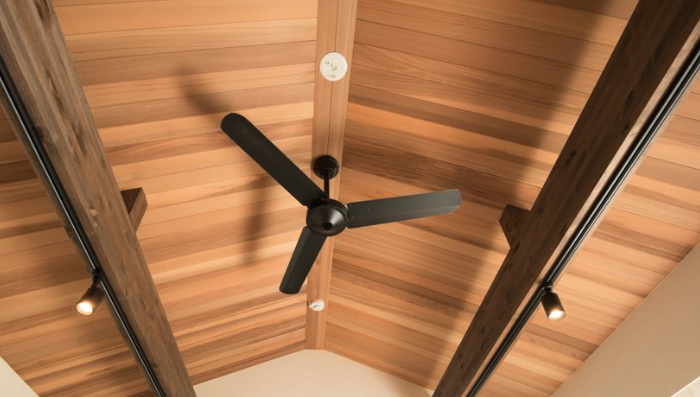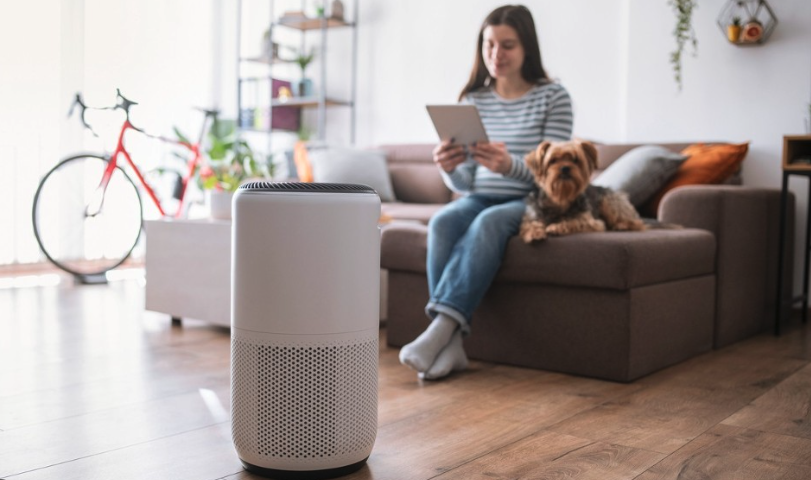Air quality has become a significant concern for many households, leading to an increased interest in devices that can improve indoor environments. Among these devices, air purifiers and fans stand out as popular choices. But a common question arises: Can these two appliances be used simultaneously? In this article, we’ll delve into this query, shedding light on the benefits, drawbacks, and best practices of using an air purifier and fan together.
Is it safe to use an air purifier and fan together?
Yes, it is safe to use an air purifier and fan together at the same time. Place the fan in a location that allows it to circulate air throughout the room, and position the air purifier nearby to capture impurities from the air. It’s also important to clean and maintain both appliances regularly to ensure they function properly.
What does a fan do?

A fan is a device that circulates air in a room or space. It works by creating a flow of air that can help cool down the room and make it more comfortable.
It typically consists of rotating blades that move air to produce a cooling or ventilation effect. Fans do not change the quality or composition of the air; they simply circulate it. They are commonly used for personal comfort, ventilation, and cooling.
What does an air purifier do?

An air purifier is a device that removes pollutants and contaminants from the air. It works by drawing in air and passing it through a filter that traps particles like dust, pollen, and smoke.
Air purifiers often use filters, such as HEPA filters, to trap these particles. Some air purifiers also use technologies like ionisers or UV lights to kill bacteria and viruses. The primary purpose of an air purifier is to improve indoor air quality.
Difference between a Fan and an Air Purifier:
Here’s a table that summarises the differences between fans and air purifiers
| Feature/Function | Fan | Air Purifier |
|---|---|---|
| Primary Purpose | Circulates air for cooling or ventilation. | Cleans and purifies air by removing contaminants. |
| Effect on Air Quality | Does not change the quality or composition of the air. | Improves air quality by removing pollutants and allergens. |
| Components | Rotating blades, motor. | Filters (e.g., HEPA, carbon), sometimes ionizers or UV lights. |
| Noise | Can produce noise depending on the speed and model. | Can be quiet or noisy depending on the model and settings. |
| Energy Consumption | Typically consumes less energy. | Can consume more energy, especially when running on high settings. |
| Maintenance | Requires cleaning of blades and occasional lubrication. | Requires regular filter replacement and cleaning. |
| Use Cases | Personal comfort, ventilation, cooling. | Improving indoor air quality, allergy relief, smoke and odor removal. |
I hope this table provides a clear distinction between the two devices!
Benefits of Using an Air Purifier and Fan Together
- improved Air Quality
- Air purifiers are equipped with filters, often HEPA, that trap harmful particles such as dust, allergens, and bacteria, ensuring cleaner air in our living spaces.
- Fans play a pivotal role in circulating this purified air, ensuring every corner of the room benefits from the cleaner air.
- Increased Comfort
- Fans, with their cooling effects, can be a respite during the hot summer months.
- The combination of purified air and the cooling effect of fans ensures a comfortable living environment, free from pollutants and excessive heat.
- Noise Reduction
- While some air purifiers can be a tad noisy, especially at higher settings, fans can help mask this noise, providing a more serene environment.
- There are also air purifiers designed with quiet operation in mind, further reducing potential noise disturbances.
- Energy Savings
- Fans can potentially reduce the reliance on air conditioning, leading to energy savings.
- Modern air purifiers are designed with energy efficiency in mind, ensuring they purify the air without significantly hiking up electricity bills.
Cons of Using an Air Purifier and Fan Together
- Potential for Reduced Efficiency
- If not positioned correctly, the efficiency of both the fan and the air purifier can be compromised.
- Regular maintenance is crucial to ensure both devices operate at their peak.
- Noise Concerns
- While fans can mask the noise of some air purifiers, in some cases, the combined noise might be bothersome to some individuals.
Best practices for Using an air purifier and fan at the same time
Air purifiers and fans are two devices that can help improve the air quality in your home. While they serve different functions, they can work together to create a more comfortable and healthy living environment. Here are some best practices for using an air purifier and fan together:
- Positioning: Proper placement is key for optimal air circulation and purification. For example, you can place the fan in a location that circulates air throughout the room and position the air purifier nearby.
- Maintenance: Regular cleaning and upkeep is important to ensure both devices function properly. You can clean filters, check for obstructions, etc.
- Speed Settings: Fan speed can affect the efficiency of the air purifier. You can use slower speeds in smaller spaces or less polluted air for better purification.
- Understanding Differences and Functions: Air purifiers primarily clean the air, while fans circulate it. Fans can support air purifiers, especially during extreme weather conditions.
By following these best practices, you can ensure that your air purifier and fan work together effectively to improve the air quality in your home.
A fan is a device that circulates air in a room or space. It works by creating a flow of air that can help cool down the room and make it more comfortable.
An air purifier is a device that removes pollutants and contaminants from the air. It works by drawing in air and passing it through a filter that traps particles like dust, pollen, and smoke.
Conclusion
Using an air purifier and fan simultaneously can be beneficial for both air quality and comfort. By understanding their functions, benefits, and potential drawbacks, users can make an informed decision on how to use these devices together. We encourage readers to share their experiences or seek further advice on optimizing their indoor air environment.
FAQ’s
- Is it safe to use an air purifier and fan together?
Yes, it is safe. Using them together can improve indoor air quality and create a more comfortable living environment. However, they serve different purposes. - Should I put an air purifier in front of a fan?
Proper placement is essential for optimal performance. - How does fan speed affect an air purifier?
Fan speed can influence the efficiency of the air purifier. - Can I use an air purifier and a fan at the same time without any drawbacks?
Yes, both devices complement each other to provide a healthy and comfortable environment. - Do ceiling fans remove pollen and dust from the air?
Ceiling fans circulate air but don’t necessarily purify it. - Do air purifiers work as fans?
While air purifiers circulate air, their primary function is to clean it, not to provide airflow like fans. - Is it possible to overwork an air purifier if you run a ceiling fan simultaneously?
It’s essential to understand how air purifiers work and ensure they aren’t overburdened. - What is ACH or ACPH in relation to air purifiers?
ACH stands for Air Change Per Hour, indicating how frequently an air purifier can clean the air in a specific room size within an hour. - Can using an air purifier and fan together help with allergies?
Yes, by trapping pollutants and cleaning the air, these devices can help relieve allergy symptoms. - Does the direction or placement of a ceiling fan affect the performance of an air purifier?
Correct usage is crucial. While a ceiling fan can boost air purifiers in certain situations, their blowing direction or placement is vital.